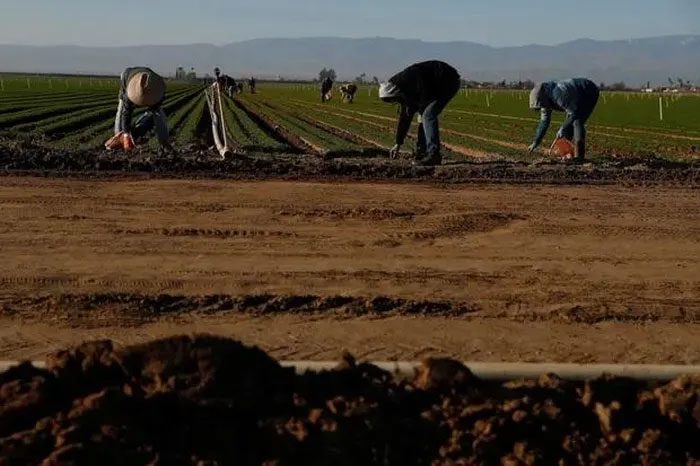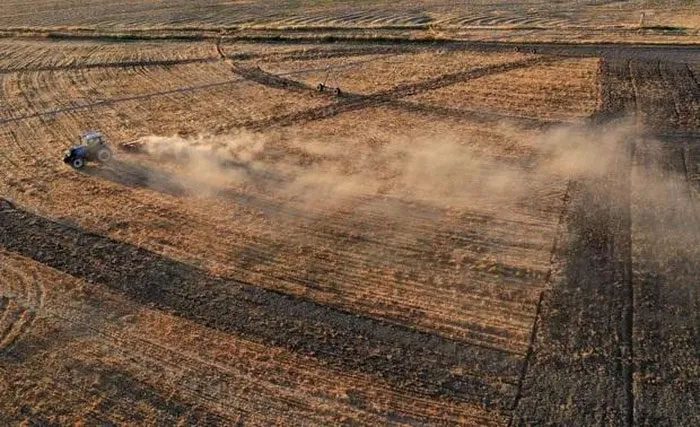Valley Fever – an outbreak originating from a type of fungus thriving in the southwestern United States – is surging amid a climate crisis that is making the region increasingly hot and dry.

The Central Valley of California is parched due to climate change. (Photo: Getty Images)
According to The Guardian, Rob Purdie’s life began to change when he experienced severe headaches that started in early 2021 and persisted for several months. Purdie visited various medical facilities for tests, but doctors were unable to accurately diagnose his condition. They suggested he had a sinus infection with episodic headaches. After numerous consultations, Purdie finally discovered what he was suffering from.
The man from Bakersfield, California, was diagnosed with meningitis due to Valley Fever – a disease caused by the Coccidioides fungus, which is endemic to the southwestern United States. Having suffered from debilitating health issues for years, Purdie struggled to find treatment amidst numerous difficulties. He shared, “This disease has taken all my health away. It has had a huge impact on my family. We lost everything, from financial security to retirement funds.”
Purdie is among a very small percentage of individuals who develop severe forms of Valley Fever. Most people do not become ill after exposure, and very few develop serious symptoms. However, for those who develop the chronic form of the disease, it can be devastating.

This tissue sample is from a patient with Valley Fever. (Photo: CDC)
The Valley Fever outbreak is escalating in California’s Central Valley. Experts warn that in the future, cases may increase across the western United States as the climate crisis makes the region hotter and drier.
Kern County, located just north of Los Angeles at the end of California’s Central Valley, has seen a significant increase in Valley Fever cases over the past decade. According to public health data, Kern County, where Purdie resides, recorded about 1,000 cases in 2014. By 2021, the area reported over 3,000 cases.
In recent years, officials have increased testing and raised awareness about the outbreak, but the region continues to see a significant upward trend in cases. Dr. Royce Johnson, the medical director of the Valley Fever Institute in Bakersfield, stated, “Currently, the area is reporting many more cases of Valley Fever. We believe that most of these cases are related to climate and weather.”
Ms. Morgan Gorris, a scientist at the Los Alamos National Laboratory who has studied the link between the climate crisis and Valley Fever (also known as Coccidioidomycosis), noted that the fungus causing Valley Fever requires dry and hot conditions to thrive.
“Much of the western United States has been very dry. When we look at climate change forecasts, we predict that the western half of the country will become increasingly arid. This condition drives more cases of Valley Fever,” Gorris explained.
Dr. Johnson added that this fungus grows in the soil in filamentous form, breaking apart and becoming airborne when disturbed, capable of spreading over 120 kilometers – it has even infected sea otters. People can be exposed to the pathogenic fungus when digging in areas where it thrives or simply by breathing the air.
Among those at higher risk are outdoor workers. Last summer, seven firefighters responding to blazes around the Tehachapi Mountains southeast of Bakersfield developed respiratory illnesses. According to the Centers for Disease Control and Prevention (CDC), three of them were diagnosed with Valley Fever.

This farm is located in Kern County, California (USA). (Photo: Reuters).
According to Johnson, about 40% of those infected experience mild respiratory symptoms, while only 1% have more severe outcomes. Most people do not show symptoms after exposure to the pathogenic fungus. Experts estimate that, in reality, very few individuals are diagnosed with Valley Fever.
In the United States, primarily in Arizona and California, approximately 20,000 cases of Valley Fever were reported to the CDC in 2019. According to the latest data, there have been about 200 deaths attributed to this outbreak each year from 1999 to 2019.
Research conducted by Gorris and other experts has shown that the climate crisis could expand the area of infection for Valley Fever. Gorris predicts that in a warming climate scenario with high greenhouse gas emissions, the endemic region for Valley Fever could extend further north to the U.S.-Canada border by 2100.
“Mitigating climate change could help limit the impacts of Valley Fever on human health. It is important that we do not become pessimistic and hopeless,” she stated. She warned that in California, as the weather shifts to more intense rainfall followed by dry seasons, these conditions are conducive to the proliferation of Valley Fever, potentially leading to more cases.

Photo: Getty Images
Purdie’s condition worsened after he was diagnosed. At that time, he was living on a large property in the suburbs of Bakersfield and often spent time outdoors. The disease turned his life upside down. Purdie, who was a financial planner at the time, had to sell cherished family heirlooms to cope with his illness.
Eventually, doctors found an appropriate treatment plan. They prescribed Purdie four pills daily and administered medication directly into his brain every 16 weeks. This complex treatment caused him to frequently vomit and sometimes faint. Purdie also struggled to interact with others.
He has since recovered and now works at the Valley Fever Institute as a patient and coordinator for developing awareness programs about the Valley Fever outbreak.
“I had a very severe form of Valley Fever. This disease can be very frightening and debilitating. But I don’t want people to be afraid of it. I want everyone to be aware of this outbreak,” he shared.


















































